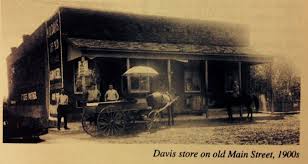Embark on a journey through time in the heart of Missouri to discover Warrensburg, a city woven with threads of history and community since its founding in 1836. Initially settled by Martin Warren, a Kentucky blacksmith, Warrensburg quickly became a nexus of activity, earning its name and status thanks to Warren’s influential gathering spot along the Osage Indian Trail. The city’s evolution continued with its designation as the county seat of Johnson County and its incorporation as a city in 1855, further spurred by the arrival of the railroad in 1864. This transformative era ushered in a new commercial district, marking a pivotal chapter in the city’s development.
Today, the original town square stands as a testament to Warrensburg’s rich heritage. Located at 302 N Main, this historical complex invites visitors to step back in time. With the original 1838 Johnson County Courthouse, Mary Miller Smiser Heritage Library and Museum, Elm School, and the Culp Building, the square is a treasure trove of historical insights. Maintained by the Johnson County Historical Society, this area hosts a variety of year-round events, including the Old Drum Day Festival and live music events, embodying the spirited community that makes Warrensburg uniquely vibrant.

- Johnson County Historical Society: Preserving Warrensburg’s Past for Future Generations Source: visitwarrensburg.com
The heart of Warrensburg’s historical narrative pulses strongest at the 1838 Courthouse, the scene of the legendary Old Drum trial. This trial not only immortalized Old Drum’s story but also left an indelible mark on American legal history through Senator George Graham Vest’s iconic “A Tribute to the Dog.” This courthouse, meticulously preserved to reflect its 1870 condition during the trial, stands as a pinnacle of Warrensburg’s legacy, offering visitors a profound glimpse into the roots of the city’s affectionate title as “Home of Man’s Best Friend.”
Another facet of Warrensburg’s storied past is its significant contribution to the Missouri mule industry, largely through the operations of the Jones Brothers Horse and Mule Barn. Once recognized as the Missouri Mule Capital, Warrensburg played a pivotal role in elevating the status of these resilient animals, contributing significantly to agricultural advancements and even the war effort during World War I. Though the barn itself has ceased operations, it remains a revered historical site, capturing the essence of Warrensburg’s agricultural pride and spirit.
Further enriching Warrensburg’s cultural landscape is Blind Boone Park, a community treasure that encapsulates the spirit of resilience and artistic achievement. Dedicated to J.W. “Blind” Boone, an influential musician who transcended the societal limitations of his time, the park serves as a vibrant venue for music, picnics, and reflection. The park’s restoration, fueled by community volunteers, underscores Warrensburg’s commitment to preserving its heritage and celebrating its diverse historical figures.
Not to be overlooked, Pertle Springs is yet another jewel in Warrensburg’s historical crown. Once a bustling resort famed for its “healing” waters, today it is a serene getaway maintained by the University of Central Missouri. Pertle Springs’ transformation from a nationally renowned resort to a peaceful retreat mirrors the city’s evolution and enduring appeal. Its history, entwined with stories of innovation and community effort, especially during World War I, showcases Warrensburg’s adaptability and resilience through the times.
Warrensburg, with its deeply rooted historical tapestry, continues to captivate residents and visitors alike. From the landmark Old Drum trial to the pivotal contributions to the Missouri mule industry, and from the cultural haven of Blind Boone Park to the tranquil retreat of Pertle Springs, Warrensburg’s legacy is a vibrant mosaic of progress, valor, and community. This city, thriving on the values and events of its past, invites everyone to explore, learn, and be a part of its ongoing history.
